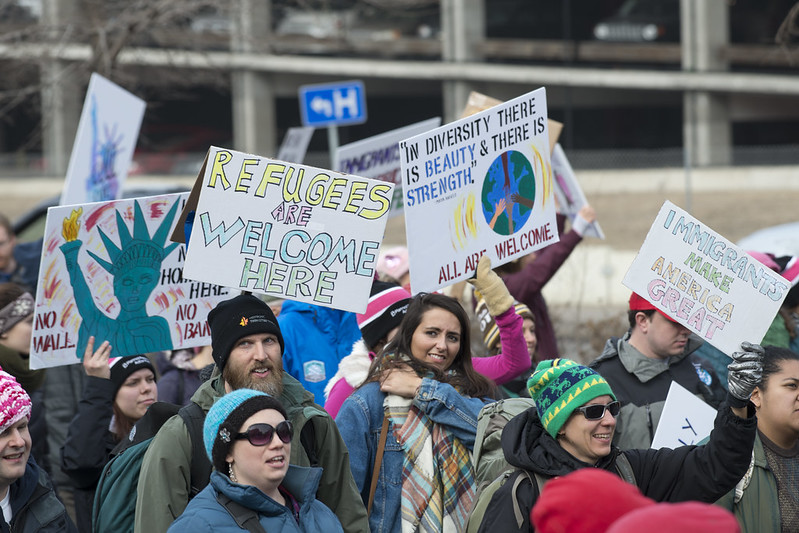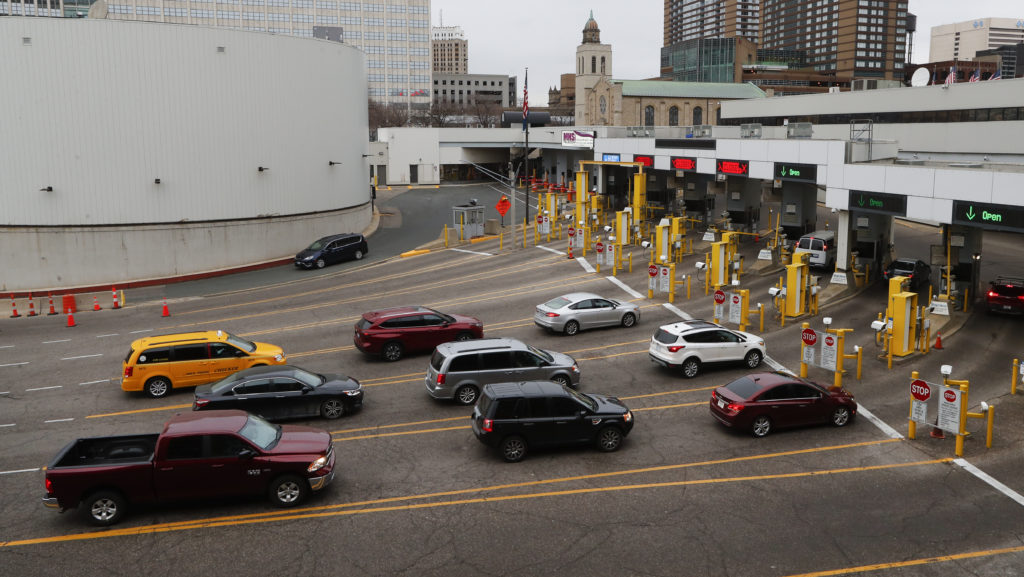
A panel of academic experts took to the new, socially-distanced podium—Zoom—to present the facts behind the painful, personal experiences affecting countless people around the globe faced with and detained by borders.
That means the small, predominantly black-owned businesses in Detroit near the Canadian border that have been deemed non-essential and whose futures are uncertain.
Or the people detained by ICE lacking basic human rights.
Hosted by Irasema Coronado—director of the School of Transborder Studies at Arizona State University—the panel discussed coronavirus through the critical lens of transborder studies, focusing on North American borders and what the panelists perceive as gaping media holes.
The panelists conveyed the ways that divisional borders—both figurative and literal—have posed an unnecessary threat to our global health and recovery from this all-consuming virus.
New Coronavirus, Same Old Xenophobia
Coronado began the meeting expressing concern over the xenophobia being perpetuated by the pandemic, along with nationalistic, misguided portrayals of the virus. Quoting Donald Trump’s divisive language of “the Chinese Virus,” she spoke anecdotally of Asian students on campus who dealt with racist harassment.
The coronavirus has highlighted many preexisting vulnerabilities and social ills, Coronado said. Those who were structurally and socially vulnerable pre-COVID-19 are at an increased risk now—especially as the U.S. response to the pandemic has been largely nationalist and divisive, rather than one of unity and an interest in the retention of all human lives.
Immigrants living within the United States, and those trying to enter, have always been a population at great risk. Yet the experience and plight of those living on or at the borders during this unprecedented time has been largely underreported.
Notably, the health and safety of the over 37,000 people being detained by the U.S. Immigration and Customs Enforcement (ICE) are at great risk. They are treated with sub-human standards and are confined to an area in which medical attention is limited at best and diseases can spread rapidly.
Further, many migrants and refugees are currently stranded, leaving them at further risk towards contracting the virus.
“Given the intense economic and social interdependence that Canada and Mexico have with the United States, closing of borders will bring major disruptions to every single component of their national fabric,” Coronado wrote.
“Initial impacts are evident on commuters, trade, business operations, food and energy supply, travel, hospitality industries, commodity prices, and ultimately the health and wellbeing of millions.”
Panelist and professor of international studies at Royal Military College of Canada, Elisabeth Vallet reminded attendees that, during the bubonic plague of the 14th century—which many have cited as the current pandemic’s closest point of reference—France decided to build a border wall.
By the time the country had completed construction, the virus had spread all across the continent—leaving 50 million dead in its wake and rendering the entire xenophobic exercise a complete waste.
Governmental and Institutional Failures
Tony Payan, director of the Center for the United States and Mexico at Rice University, spoke on the institutional failures in response to the coronavirus pandemic to date.
Rather than addressing the aforementioned humanitarian crises and presenting cohesive and consistent medical advice, the United States—along with many other governments—have been grappling with a series of “false dilemmas.”
Governments are continuing to turn towards and rely upon the very systems that are currently failing as solutions to this global crisis, Payan stated.
Rather than working towards the common interest of sustained human health, governments have approached the pandemic as an issue of status, financial investment, jurisdiction and power.
Gaps and Weaknesses in Media Coverage
Manuel Chavez—director of Journalism, Information and Media PhD Program and president of the Association for Latino Media Markets Research Scholars—spoke on the role of the media in framing both the information received, and the response it initiates, from the general public.
Chavez highlighted the disparity between reports from scientists and health officials, and those presented by the federal government. He warned of the dangers of sensationalist media that promotes panic rather than making a concerted effort to promote facts required to keep the public as safe as possible.
For instance, he cited the limited coverage on the fact that many Mexican, migrant workers will go unpaid—and his inability to locate any information regarding the numerous Canadians who are prevented or challenged as they attempt to cross the border daily to work in hospitals in Detroit.

Chavez lamented the lack of reporting on the countless small businesses on the Canadian border, who have been deemed inessential and are rapidly losing revenue. This revenue loss has primarily impacted black business owners.
Hector Padilla, professor of social sciences at the Universidad Autónoma de Ciudad Juárez, spoke on the particularly traumatic and painful expressions of the virus upon the most unprotected and vulnerable social sectors of society.
In addition to those at risk due to age or health conditions, the poor are at greater risk due to limited social service resources—often working within an informal economy—and reduced access to reliable, consistent information.
Further, international and national migrants—most often displaced by violence, poverty, inequality and environmental disaster—are perhaps even more vulnerable as they frequently live in irregular conditions with limited access to regulated pay and formal services.
Padilla expressed how migrant communities lack the resources of governments, both local and federal, as they are not considered priorities. Their interpersonal support is limited due to a lack of social networks and local family and limited community ties due to cultural and racial prejudices and xenophobia.
He called upon governments to focus their efforts on consolidating a public health system that is accessible and open to the entire population—regardless of immigration status.
The coronavirus pandemic and the response by federal, state and local authorities is fast-moving.
During this time, Ms. is keeping a focus on aspects of the crisis—especially as it impacts women and their families—often not reported by mainstream media.
If you found this article helpful, please consider supporting our independent reporting and truth-telling for as little as $5 per month.





